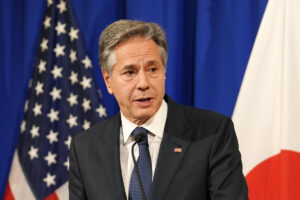How Saudi Arabia Became a Threat to European Football
3 min read
The overwhelming amount of money and numerous privileges have attracted a large number of notable names from Europe. It is astonishing that eight out of the top ten highest-paid footballers on the planet currently play for clubs in this country, clearly indicating that they have become a serious threat to European football. The English are particularly concerned, fearing that in the future, Arab dollars will lure many football stars, making the Premier League the most attractive in the world.
In just one summer transfer window in Saudi Arabia, over a billion dollars were spent on transfers. Clubs in the aforementioned Premier League alone have spent more money on bringing in players. It should be noted that this is only the compensation to the clubs for the arrival of players, and does not include the staggering salaries paid to the players.
In 2022, it was reported that Cristiano Ronaldo would continue his career in Saudi Arabia. A few months later, the Middle East became a hot destination for many stars, with a huge number of players flocking for the immense earnings in the Arabian Peninsula. Among those who have moved to Saudi Arabia are two Serbian national team players – Aleksandar Mitrovic and Sergej Milinković-Savić.
Al Ahli has brought in Firmino, Marrez, Eduar Mendy, and Frank Kessie, while Al Itifak has appointed Steven Gerrard as the coach and strengthened the team with Henderson, Georginio Wijnaldum, and Moussa Dembele. Currently, the two highest earners in the world are Cristiano Ronaldo at Al Nasra and Karim Benzema at Al Itihad, each receiving 200 million euros annually, excluding bonuses and incentives. Neimar at Al Hilal and N’golo Kante at Al Itihad earn half as much, around 100 million euros per season.
Sadio Mane at Al Nasra earns 40 million euros annually, while Jordan Henderson at Al Itifak, Riyad Mahrez at Al Ahli, and Kalidou Koulibaly at Al Hilal earn 40 million, 35 million, and 30 million euros respectively. Among the highest-paid footballers are also the Serbs Sergej Milinković-Savić and Aleksandar Mitrović, who earn around 25,000,000 euros annually at Al Hilal. “It’s not a threat to us, we saw the same approach in China several years ago.
They brought in players who were at the twilight of their careers and offered them a lot of money, after which Chinese football did not particularly develop, nor did the national team qualify for the World Cup,” said Ceferin, adding, “I think that such a way is not correct. They should work on the development of players and coaches, but in the end, it’s not my problem.” Chinese clubs had a series of expensive transfers from European clubs in 2016 and 2017, but the experiment failed after a few years.
However, many experts believe that the Saudi league will not suffer the same fate. A detailed long-term plan was devised before bringing in top players to make this league one of the top ten in the world in the future. The Public Investment Fund (PIF), with assets worth 776 billion dollars, owns four of the largest Saudi clubs – Al Hilal, Al Nasra, Al Ahli, and Al Itihad.
The state-owned royal fund is overseen by the crown prince and prime minister of Saudi Arabia, Mohammad Bin Salman. The transfer of ownership to PIF marked the beginning of the privatization process for clubs that were previously under the control of the Ministry of Sports. In addition to the four taken over by PIF, another four have been transformed into companies, and their ownership has been transferred to development agencies.
The arrival of globally popular footballers affects the development of infrastructure and the interest of the rest of the world in their performances at clubs throughout Saudi Arabia, ultimately contributing to the popularization of the league and the country. The ultimate goal is to host one of the most prestigious sports events, the FIFA World Cup. Saudi Arabia already hosts the Formula 1 Grand Prix, will host the Asian Winter Olympics in 2029, and has secured the hosting rights for the World Cup in 10 years’ time.
How football will look then remains to be seen.



